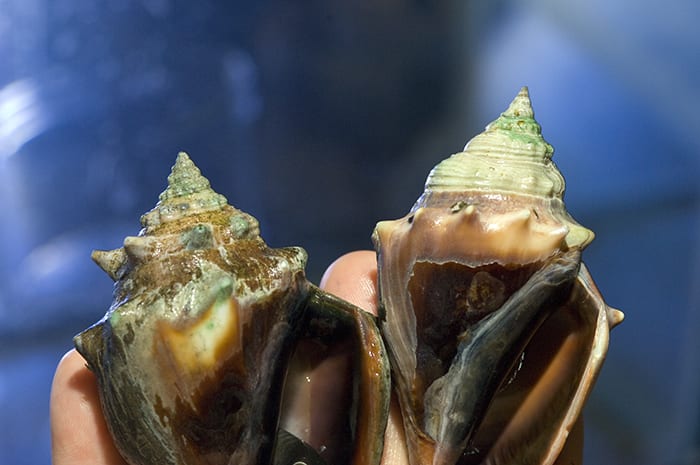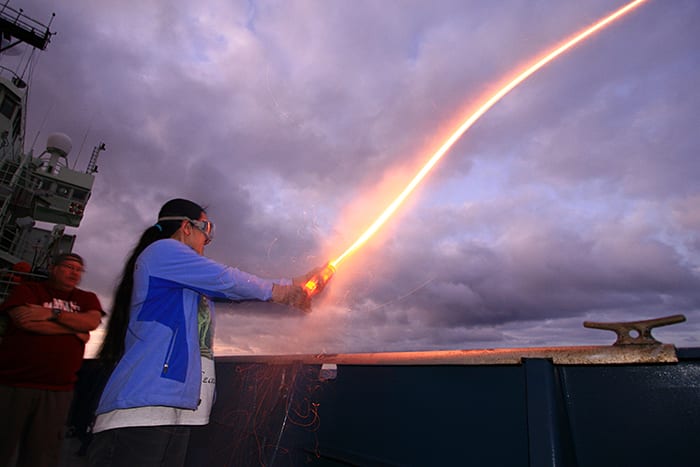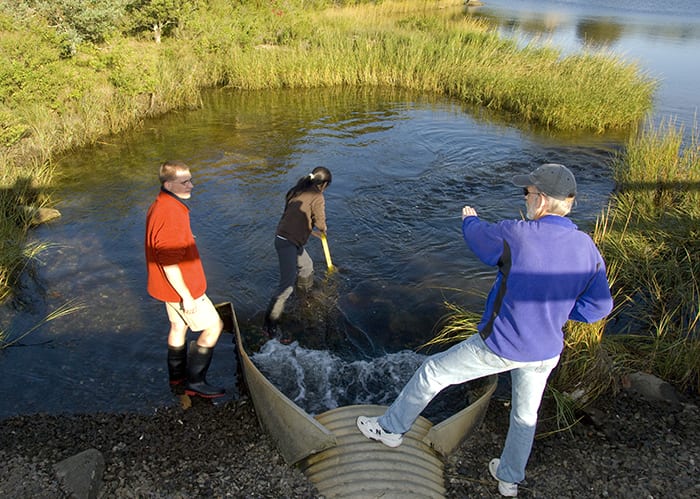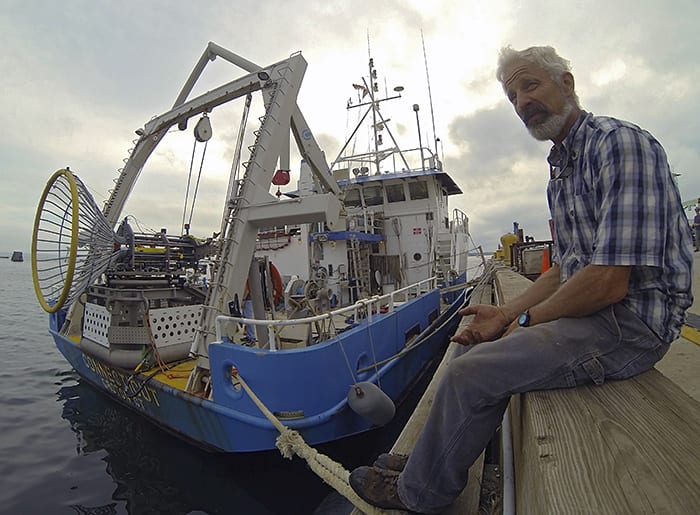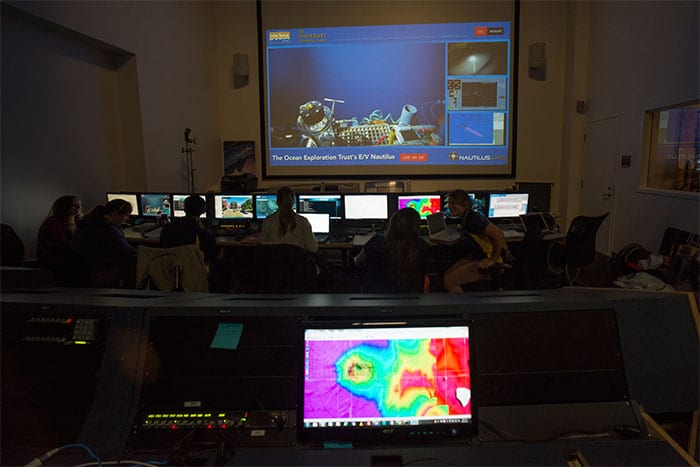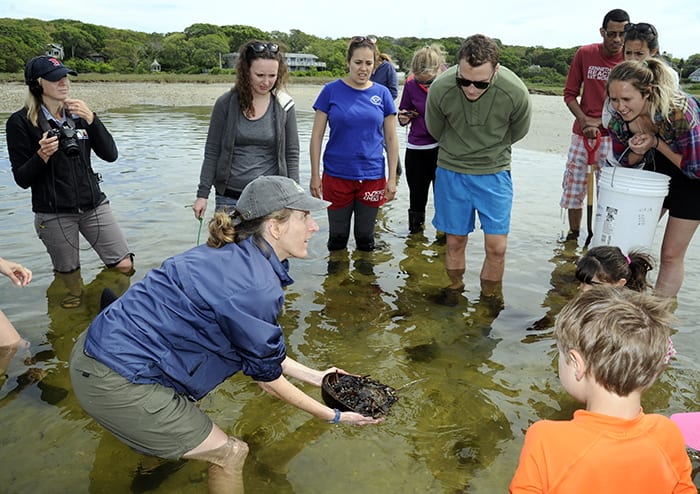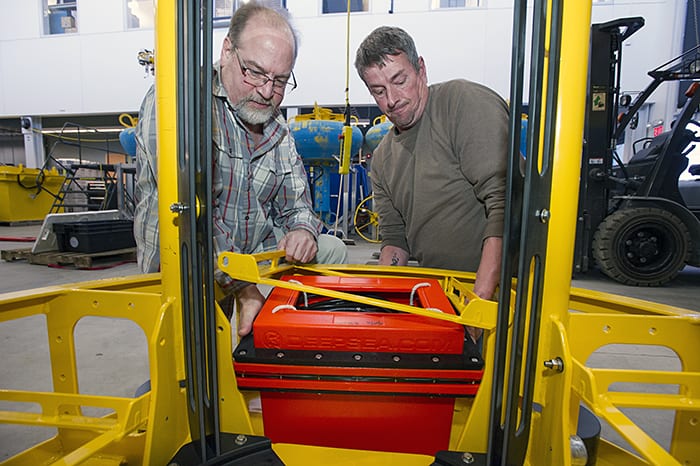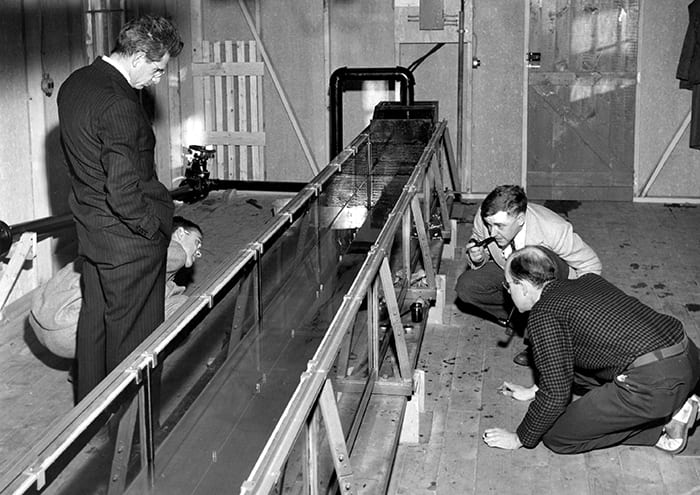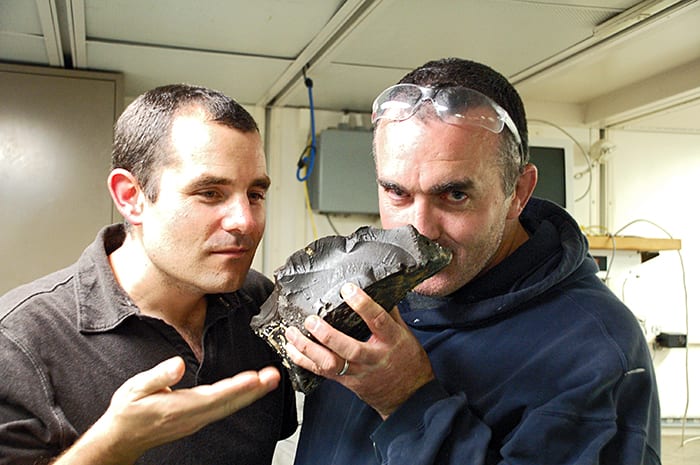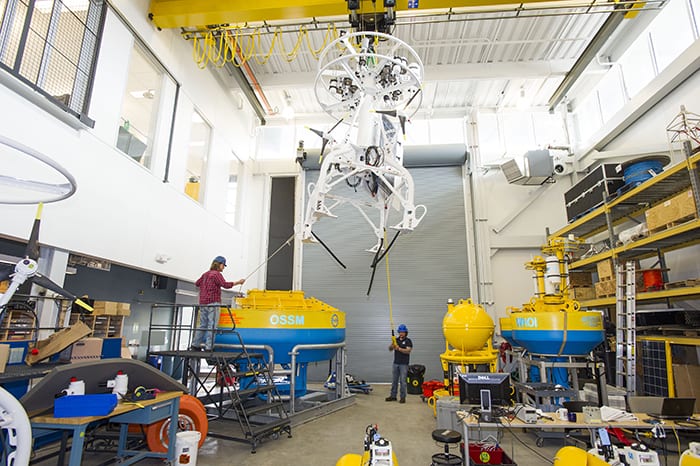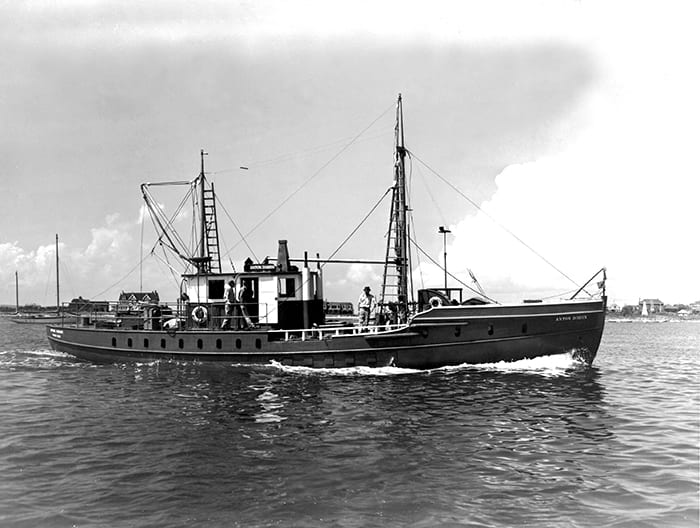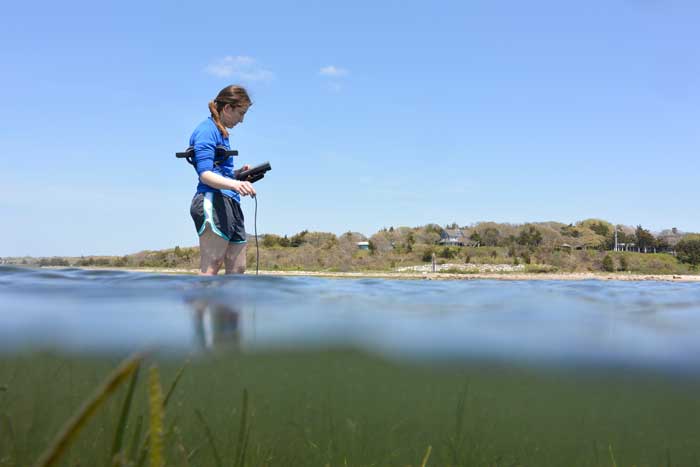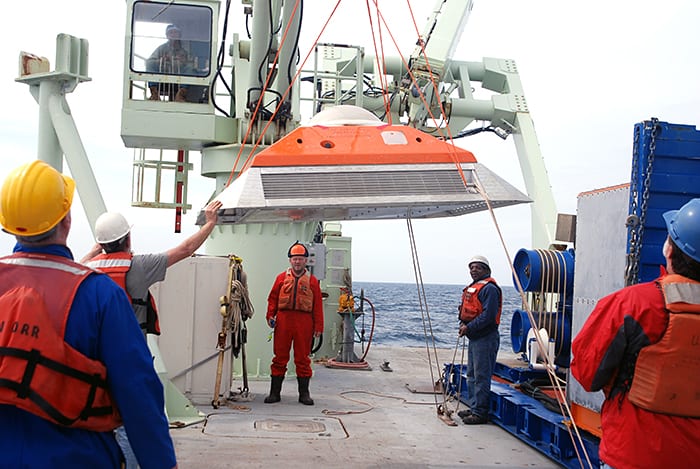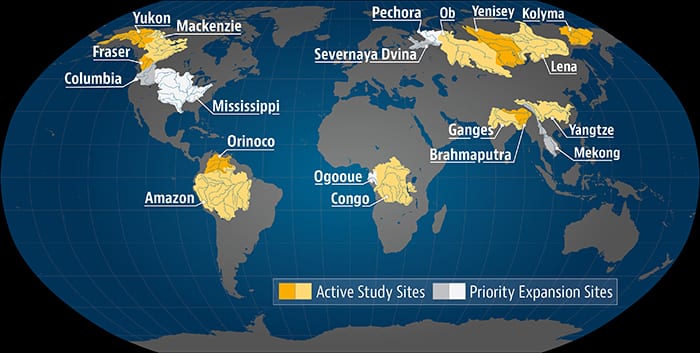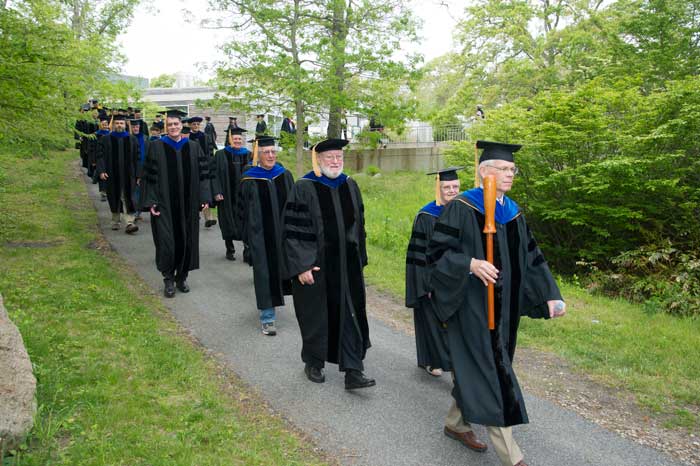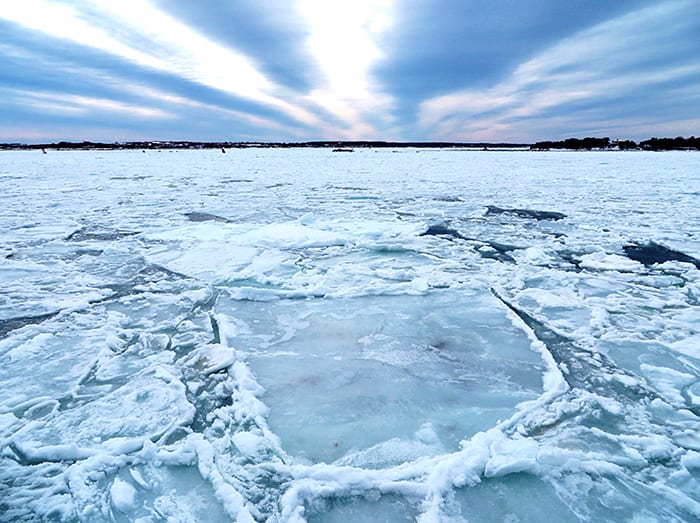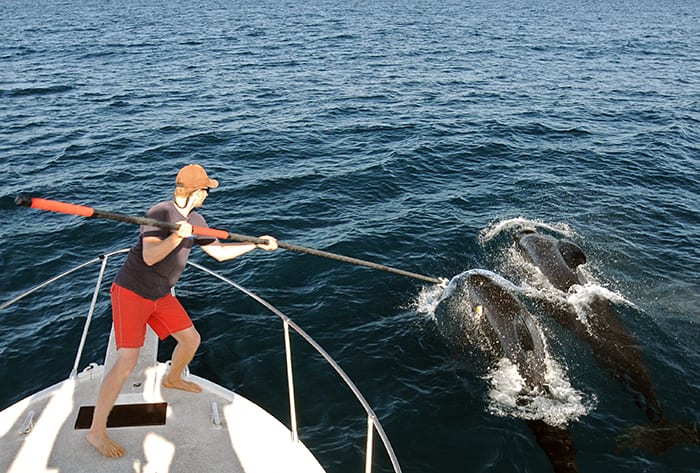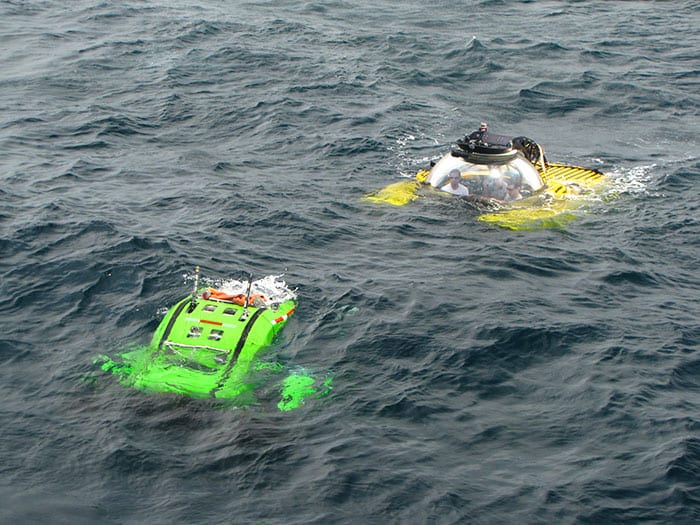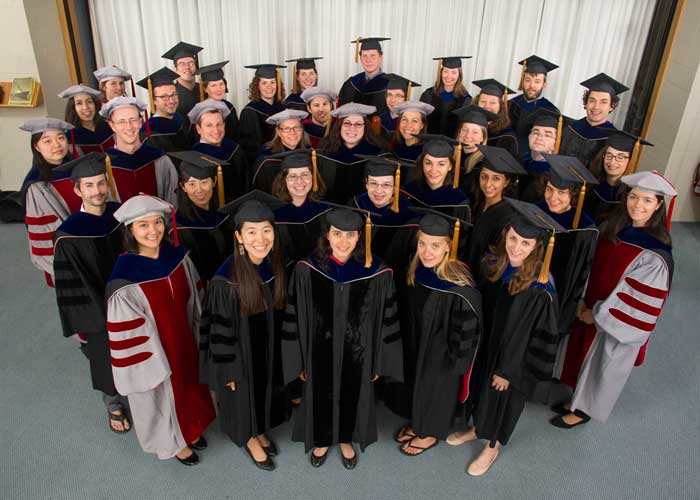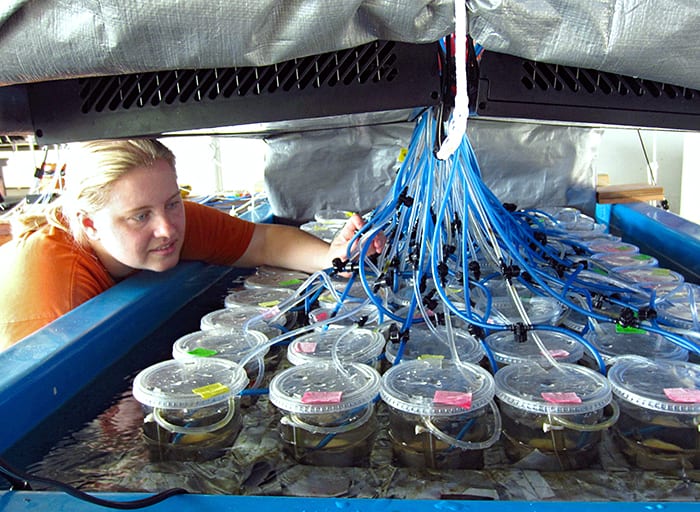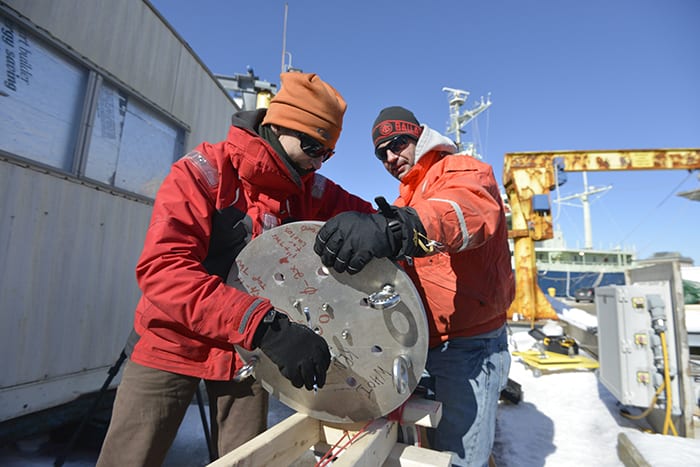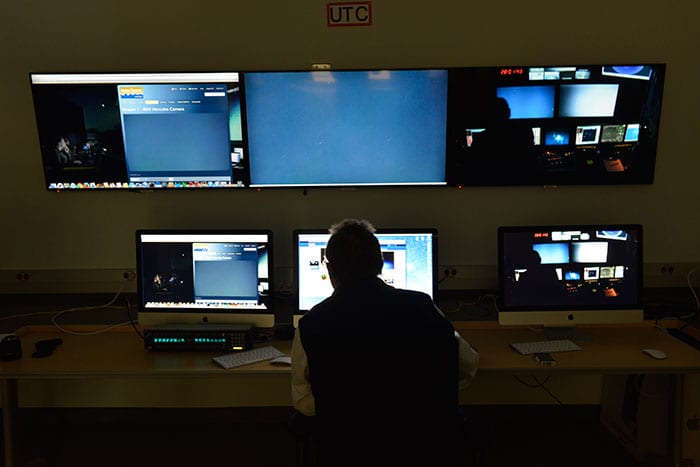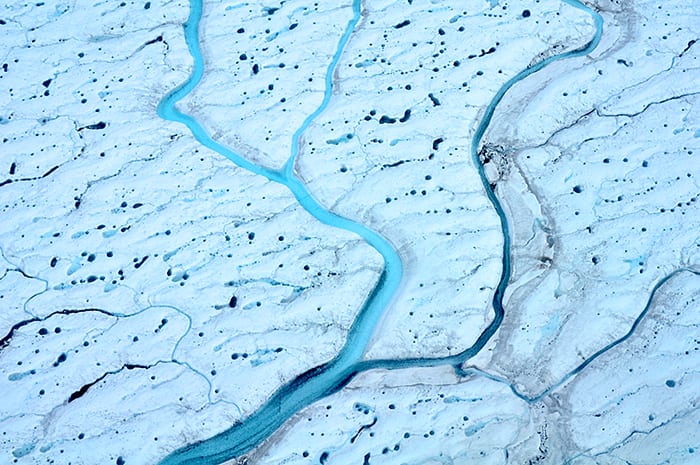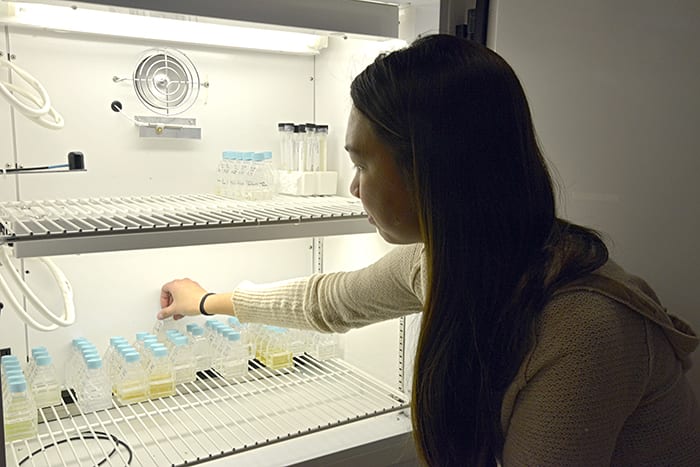Multimedia Items
Shells at Risk
For years WHOI researchers have been studying ocean acidification and its impacts on marine life. In 2009, WHOI postdoctoral scholar Justin Ries (now at Northeastern University) with WHOI scientists Anne…
Read MoreRocket’s Red Glare
R/V Atlantis crewmember Rick Bean watched as WHOI geologist Wenlu Zhu fired an expired emergency flare from the ship during a 2009 cruise (after first warning other ships in the area…
Read MoreA Stream in the Ocean
WHOI scientists are often spotted around Cape Cod leading teams of students on class fieldtrips. Sometimes common features on land can even fill in as simplified examples of larger, more…
Read MoreThe More Things Change
Will Ostrom has seen ocean science change quite a bit in his 40-year career as a technician at WHOI. Here, he takes a break after helping load a REMUS docking…
Read MoreTREET View
In the fall of 2014, undergraduate science students watched live video and data from the Caribbean in the University of Rhode Island’s Inner Space Center during an expedition investigating deep-sea…
Read MoreKicking Off Summer
WHOI biologist Stace Beaulieu led a group of undergraduate Summer Student Fellows on a tour of beach ecology during a recent fieldtrip to Wood Neck Beach in Falmouth. The goal…
Read MoreESP Power
Research associate Bruce Keafer and senior engineering assistant Jim Dunn wrestle a battery pack onto a frame to hold an Environmental Sample Processor (ESP), a computerized mini-laboratory to be moored…
Read MoreWith the Flow
In 1948, this WHOI flume was located in a small building behind the Bigelow Laboratory, and was used for studies of phenomena that included the flow of fresh-water into saltwater.…
Read MoreOil in the Ocean
Each year, thousands of barrels of oil seep out of the ocean floor. On a 2009 cruise aboard the R/V Atlantis, WHOI chemist Christopher Reddy (right) and David Valentine of…
Read MoreBuilding the Observatory
In the high bay of WHOI’s Laboratory for Ocean Sensors and Observing Systems (LOSOS), Jared Schwartz (left) and Steve Caldwell guide a surface mooring tower onto its base, for the…
Read MoreUp From the South
A gift from the Carnegie Institution’s Dry Tortugas laboratory when it closed, the 70-foot (21-meter) Anton Dohrn made 40 cruises from 1940 to 1947 for WHOI investigations from the Gulf…
Read MoreResistance in Action
MIT-WHOI Joint Program graduate student Megan May tested temperature and salinity of the water near Little Island in West Falmouth, Mass., recently as part of her research. May is studying…
Read MoreView from the Bottom
John Beaton (center), a marine science technician with the Scottish Association for Marine Science looks on as a trawl-resistant “bottom lander” is deployed from R/V Knorr as part of the…
Read MoreOf Carbon and Rivers
Scientists involved in the Global Rivers Observatory are studying Earth’s major river systems to understand what they transport to the ocean and how river chemistry reflects environmental change in their…
Read MorePomp, Circumstance, and the Sea
WHOI Director of Research Larry Madin led a procession of WHOI scientists at the commencement of MIT-WHOI Joint Program graduate students in June. The wooden ship’s belaying pins that Madin…
Read MoreHow Cold Was It?
Hard to believe with the beginning of summer approaching, but only four months ago it was so cold that much of Woods Hole Harbor froze. Scientists at WHOI and elsewhere…
Read MoreTag and Release
MIT-WHOI Joint Program student Nicholas Macfarlane applies a DTAG to a pilot whale in the Strait of Gibraltar. The digital acoustic recording tag was developed at WHOI in 1999 by…
Read MoreFinal Check
The Deep Rover 2 (foreground) in the water after being launched from R/V Alucia with a team that includes WHOI engineer Mike Skowronski (left inside the sphere) looking on from…
Read MoreThe Graduates
The MIT-WHOI Joint Program in Oceanography/Applied Ocean Science and Engineering, created in 1968, has graduated nearly 1000 alumni. Each year, graduating Joint Program students participate in the MIT commencement. Every…
Read MoreCorals and carbon
MIT-WHOI Joint Program student Hannah Barkley studies the impacts that warmer, more acidic seawater may have on corals. As atmospheric carbon dioxide rises, the ocean is absorbing more of the gas,…
Read MoreAssembly Line
Technicians Meghan Donohue (left) and Andrew Davies worked through a bitterly cold morning in February to assemble a new expendable spar (X-Spar) buoy conceived by WHOI scientists Carol Anne Clayson…
Read MoreMission Controller
Geologist Chris German monitored dive operations of the NOAA remotely operated vehicle (ROV) Herculese live from the Coleman and Susan Burke Operations Room at WHOI. The dives were part of his…
Read MoreSpring Melt
After long dark winters, sunlight returns to Greenland each spring. Meltwater streams into depressions in the ice to form large supraglacial lakes that can be miles wide. Thousands of these…
Read MoreHandy Trick
WHOI biologist and NSF post-doctoral fellow Holly Moeller examines some of the marine microbe cultures she is growing in light and temperature conditions that mimic parts of the open ocean.…
Read More
